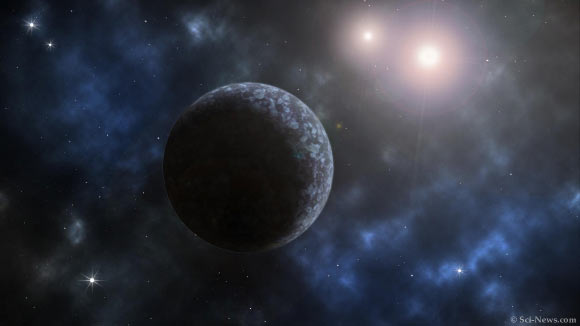Gliese 338Bb: Super-Earth Found in Nearby Binary System | Astronomy – Sci-News.com
Astronomers using the CARMENES spectrograph at Calar Alto Observatory in Spain have discovered a super-Earth exoplanet orbiting an M-dwarf star in the binary system Gliese 338. The newfound planet orbits on the inner edge of the habitable zone and is much more massive than Earth.
Gliese 338 is a wide binary system located approximately 20.7 light-years away from Earth.
The stellar system is over one billion years old, and consists of two similar M0-type stars: Gliese 338A (also known as GJ338A or HD 79210) and Gliese 338B (GJ 338B or HD 79211).
The stars are between 64 and 69% the mass of the Sun. The projected separation between them is about 109 AU.
A team of astronomers led by Centro de Astrobiología’s Dr. Esther González-Álvarez explored the presence of small planets in tight orbits around Gliese 338A and B using the spectroscopic radial velocity technique.
They analyzed radial velocity data from the CARMENES spectrograph as well as ground-telescope photometry from Las Cumbres and Sierra Nevada observatories.
The planet they discovered orbits the smaller member of the system, Gliese 338B, once every 24.45 days at a distance of 0.14 AU.
Named Gliese 338Bb (GJ 338B or HD 79211b), the alien world has a mass of 10.3 times the mass of the Earth.
“Gliese 338Bb is one of the least massive planets ever discovered in one star of a binary system of relatively small separation,” Dr. González-Álvarez and her colleagues said.
They estimate the planet’s temperature to be between 27 and 117 degrees Celsius (81-243 degrees Fahrenheit).
“Gliese 338Bb lies inside the inner boundary of the habitable zone around its parent star,” the astronomers said.
“The masses, spectral types, brightnesses, and even the rotational periods are very similar for both stars, which are likely coeval and formed from the same molecular cloud, yet they differ in the architecture of their planetary systems.”
The team’s paper will be published in the journal Astronomy & Astrophysics.
_____
E. González-Álvarez et al. 2020. The CARMENES search for exoplanets around M dwarfs. A super-Earth planet orbiting HD 79211 (GJ 338 B). A&A, in press; arXiv: 2003.13052







